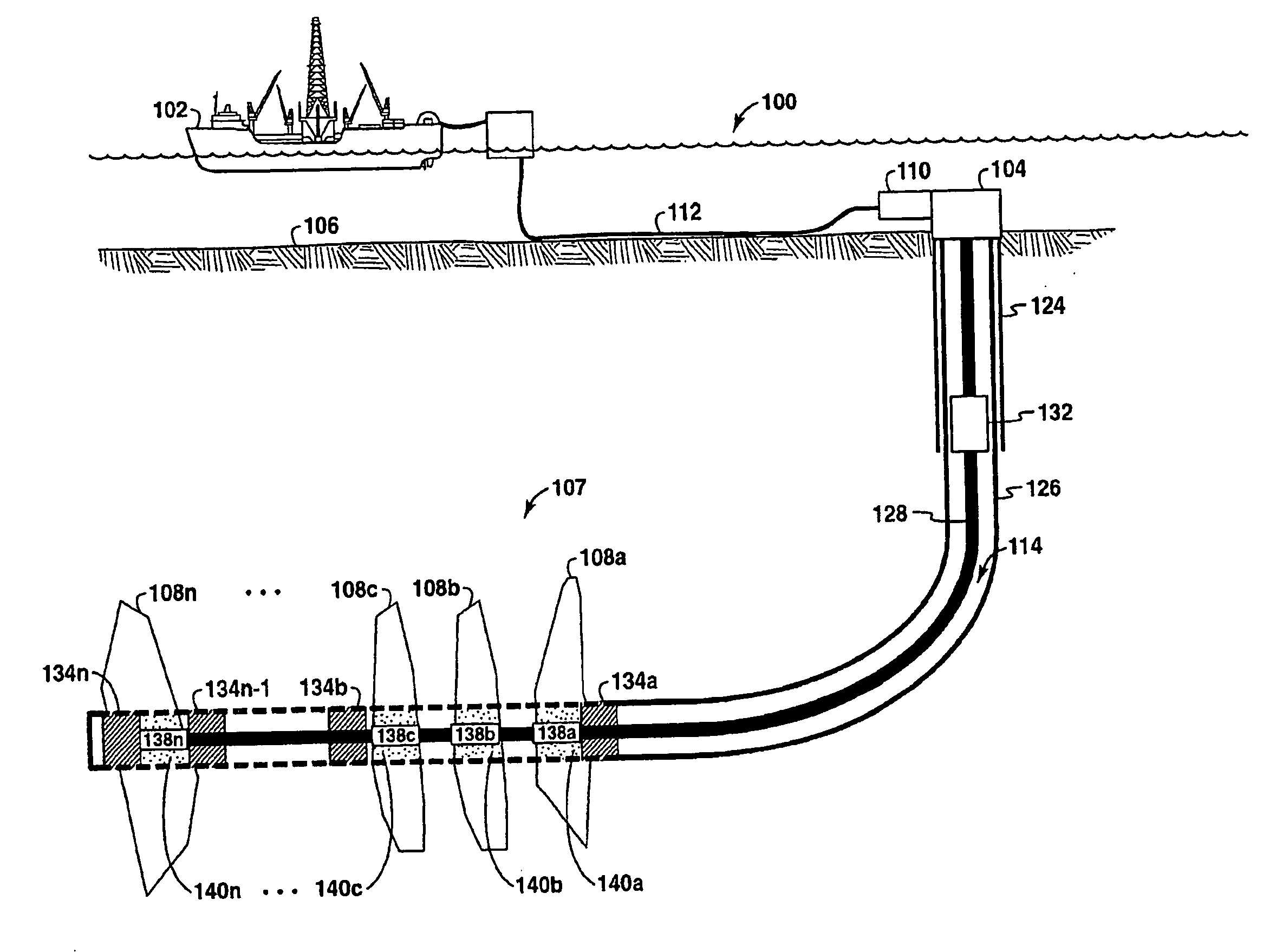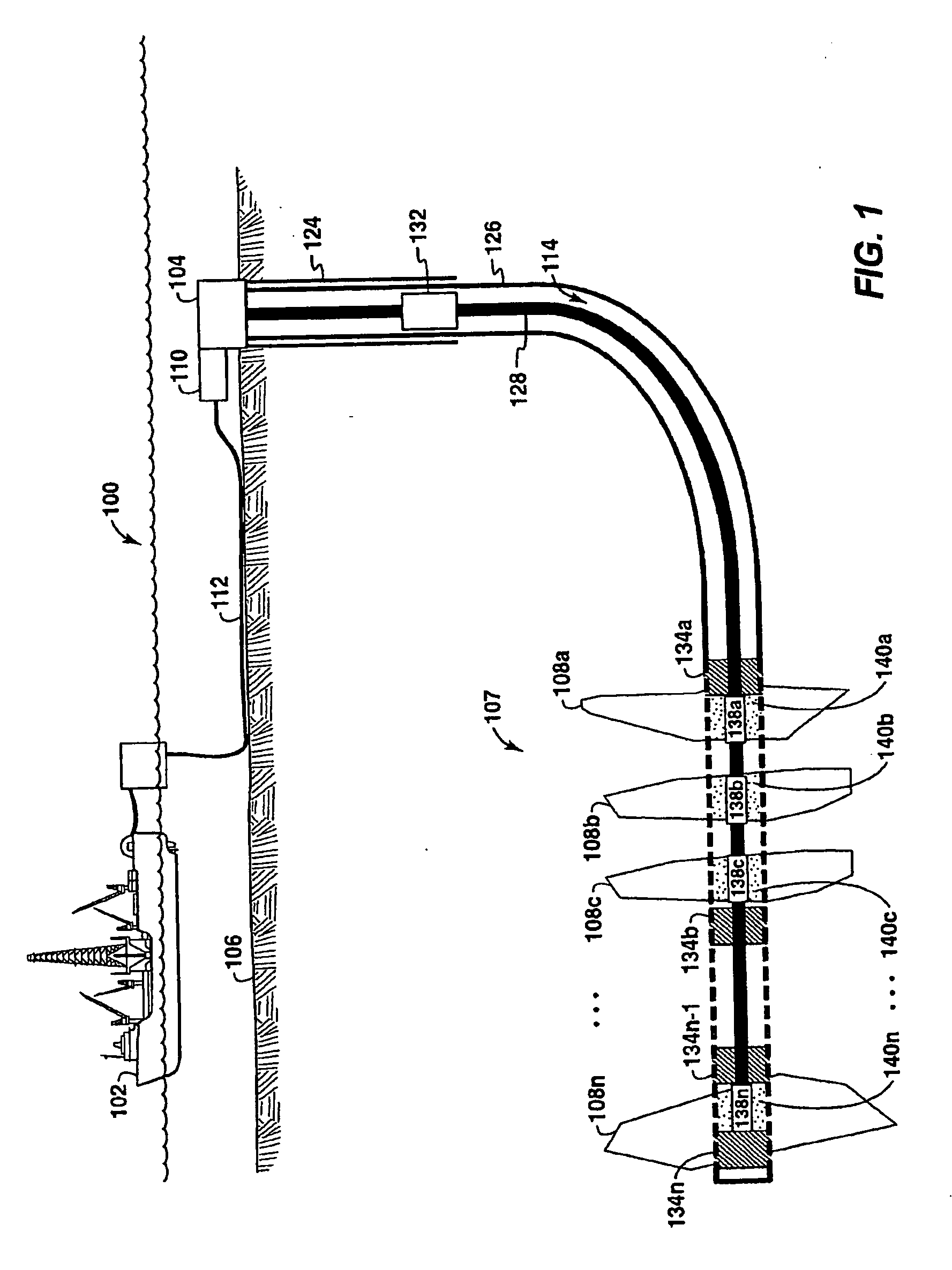Conformance Control Through Stimulus-Responsive Materials
a technology of conformance control and materials, applied in the direction of drinking water installation, borehole/well accessories, construction, etc., can solve the problems of fewer wells being operated, increasing the cost of individual wells, and challenging the production of hydrocarbons from some subterranean formations
- Summary
- Abstract
- Description
- Claims
- Application Information
AI Technical Summary
Benefits of technology
Problems solved by technology
Method used
Image
Examples
example 1
[0059]This exemplary embodiment is based on the concept of diverting flow from “normal” radial flow (from the sand face, through the gravel pack, through the screen) where pressure drops are small, to a restricted linear flow path through the annular space outside the screen where the pressure drops are much larger, which may be further explained with reference to FIG. 7. This embodiment entails a method for isolating flow paths in both the sand face or casing-by-gravel pack screen annulus and the gravel pack screen-by-base pipe annulus. Blocking either of these annuli allows control of the production (or injection) profile using plugs and / or straddle packers in the base pipe's inner diameter (ID). The present methods for blocking the flow paths include filling the spaces with consolidated sand composites (containing some fraction of stimulus-responsive polymer beads or gravel coated with stimulus-responsive polymer) or other fluid (hydrocarbon or water) sensitive materials designed...
example 2
[0060]An alternate exemplary embodiment includes pumping a pack of particulate solids, a first portion of which comprises a particulate coated with a polymer that swells in the presence of formation water, and a second portion of which comprises a particulate coated with a polymer that “shrinks” when contacted with crude oil. This “double acting” gravel pack may improve permeability in the areas of the wellbore that produced oil and reduce permeability in the areas of the well bore that produced water.
[0061]The exemplary embodiments described in Examples 1 and 2 may be utilized in any gravel pack application where gravel is tightly packed and the gravel pack is substantially free of voids. The elimination of voids in the gravel pack or addition of stimulus-responsive particles that swell in the presence of water eliminate unrestricted annular flow paths by ensuring that flow is forced through low permeability gravel packs. The flow rate is then controlled by the length of the flow p...
example 3
Natural Sand Packs (NSP)
[0075]In an alternative example, sand control screens may also be installed without a gravel pack. In these installations, unconsolidated sand from the formation fills in the annular space as the well is produced over time. The present techniques may be utilized in a manner similar to the discussion above, to control inflow profiles as long as the natural sand pack is free of voids (i.e., has sufficiently low permeability) between the installation of stimulus-responsive particles or materials according to the present techniques and the interval where profile control is beneficial.[0076]B) Water or Gas Shut-Off via Completion Design: Stimulus-Responsive Coatings.
[0077]In these examples, water or gas ingress may be expected during the operation of the well prior to the installation of the completion. These examples may also be applicable for natural sand pack, open-hole gravel pack or cased-hole gravel pack completion type.
PUM
 Login to View More
Login to View More Abstract
Description
Claims
Application Information
 Login to View More
Login to View More - R&D
- Intellectual Property
- Life Sciences
- Materials
- Tech Scout
- Unparalleled Data Quality
- Higher Quality Content
- 60% Fewer Hallucinations
Browse by: Latest US Patents, China's latest patents, Technical Efficacy Thesaurus, Application Domain, Technology Topic, Popular Technical Reports.
© 2025 PatSnap. All rights reserved.Legal|Privacy policy|Modern Slavery Act Transparency Statement|Sitemap|About US| Contact US: help@patsnap.com



